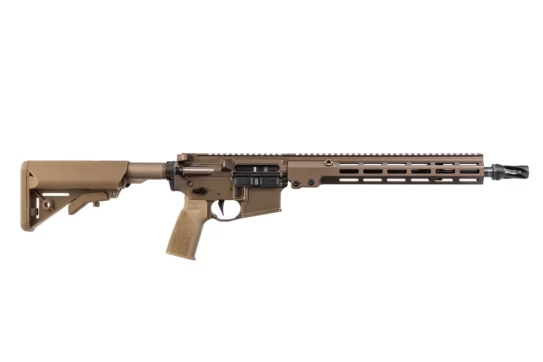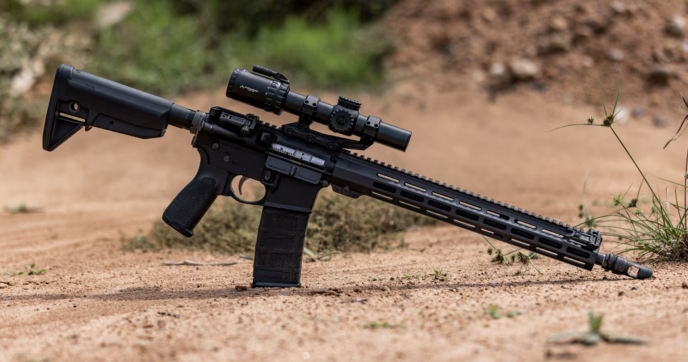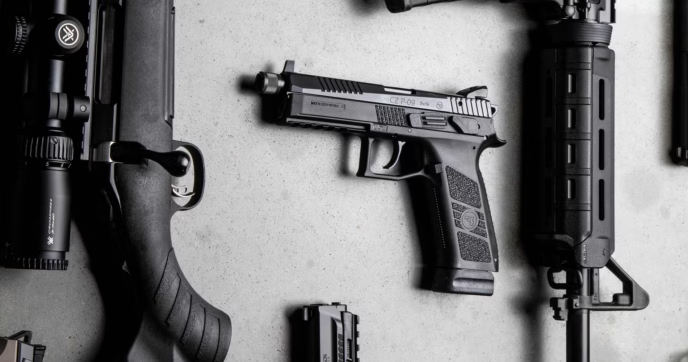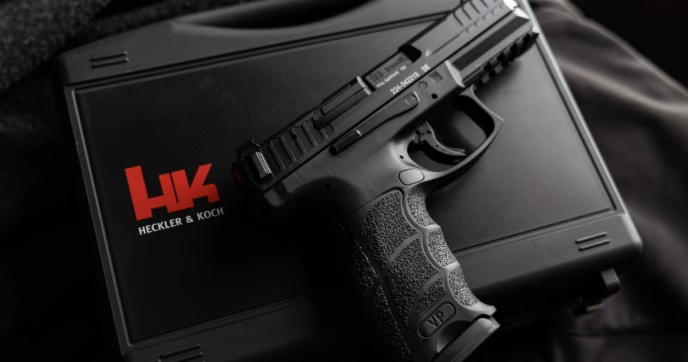Geissele Automatics is arguably one of the most noteworthy names in the entire firearm industry. Starting out as a small aftermarket trigger manufacturer in 2004, they’ve expanded to become one of the largest industry defense suppliers and true AR-15 manufacturers, renowned for their legendary quality and impressive lineup.
While they’ll always be known for their AR triggers, they’ve become renowned for their AR platform rifles, with their Super Duty line of AR-15s being particularly favored amongst enthusiasts. Simply put, Geissele’s Super Duty AR-15 rifles are built to perform–coming outfitted with a ton of Geissele’s premium parts already installed, all you have to do is add an optic and whatever other accessories you want it to have and it’s ready to go.
Regardless of brand though, choosing a rifle can often be the cause of some confusion. And since Geissele offers multiple variants of their Super Duty rifles, it can be a challenge when you have to pick just one. As such, it’s critical to know how they compare so that you can choose the one that’s best for you.
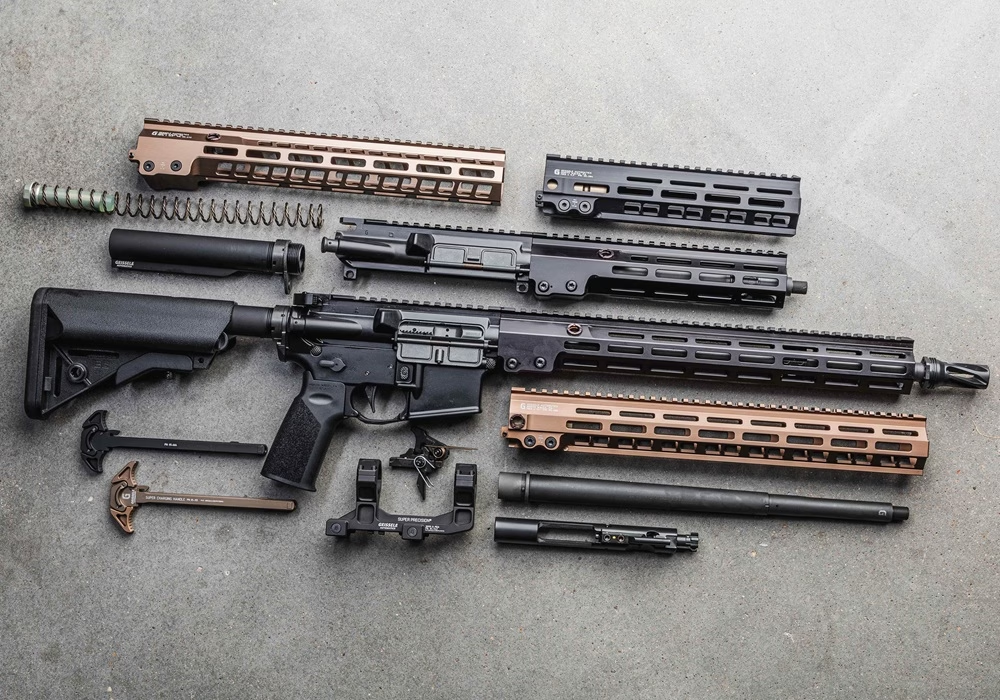
Why Choose the Geissele Super Duty Platform
Before we get into the intricacies of how each Super Duty rifle differs, it’s important to understand what they are in the first place. The Geissele Automatics Super Duty AR-15 line is designed to be a premium rifle choice for those who aren’t keen on building their own rifles with individual parts. As noted above, they come with many of Geissele’s premium components, giving them an edge over other rifles. Plus, nearly every component, including the detents needed for their safety selectors and pivot pins, are produced entirely in-house by Geissele, ensuring that each one has gone through a thorough quality inspection before installation.
For starters, these rifles come outfitted with a cold hammer forged and chrome-lined barrel, maximizing both durability and accuracy. Additionally, they come standard with their Super Modular Rail (SMR) MK-16 handguard, their Ultra Duty lower parts, SSA-EX trigger, and their Airborne charging handle. Plus, to top it off, it also comes standard with B5 Systems furniture and a HUXWRX flash hider that’s ready for use as a suppressor host. All these components culminate in forming a rifle that’s ready for just about anything, making them the perfect canvas for your next general-purpose build.
There’s a lot that makes Geissele’s AR-15 parts special, and in our Geissele Brand Review we go in-depth on not only their AR parts, but also the company’s history and other product lines.
Understanding the Super Duty Rifle Series
As you might’ve already suspected, Geissele’s Super Duty line of rifles is made up of multiple options. Currently available in their MOD 1 configuration (the latest generation that has added the, now standard, HUXWRX muzzle devices), they all come equipped with the components listed above, and they’re all also chambered in 5.56 NATO, giving them relatively similar characteristics. The biggest difference between these rifles is their barrel lengths, so although the finish and barrel profile can vary, there’s essentially three variants to choose from: a 16-, 14.5, or 13.9-inch rifle.
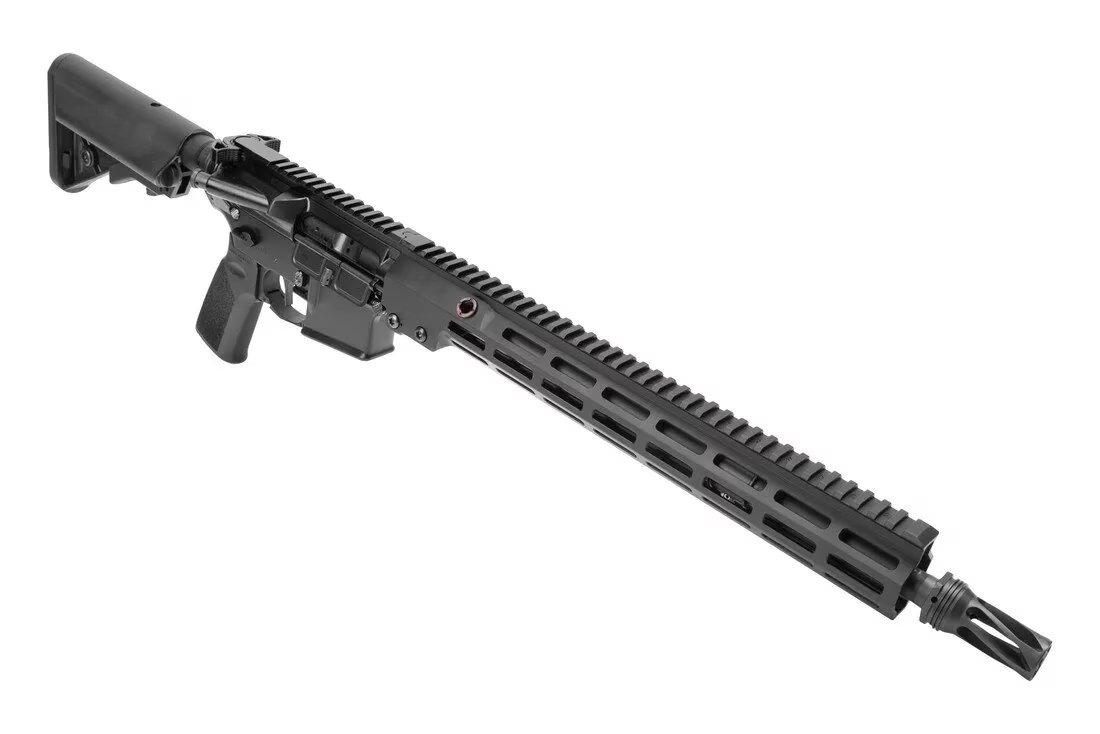
Super Duty MOD1 16-inch
The Geissele Super Duty MOD1 5.56 NATO AR-15 Rifle – 16″ is one of the most versatile variants of the lineup. Equipped with a 16-inch barrel, they’re a solid pick for general-purpose use, and have a lot of potential for multiple applications. Plus, since the barrel is 16 inches long, the included HUXWRX Flash Hider isn’t pinned and welded to it, meaning you can swap it out for another muzzle device, if you want that is.
From the factory, these rifles are a great foundation for GP and SPR builds. Its 1/7 twist and longer barrel length makes it compatible with several different 5.56 loads, and it can be accurate out to 750 yards when using specialized ammo, like 77-Grain Match-Grade loads, and a good optic. This makes the 16-inch Super Duty MOD1 a true jack of all trades. And, despite being the longest option in the Super Duty lineup, it’s still compact and maneuverable enough to be a solid defensive, competitive, or duty rifle.
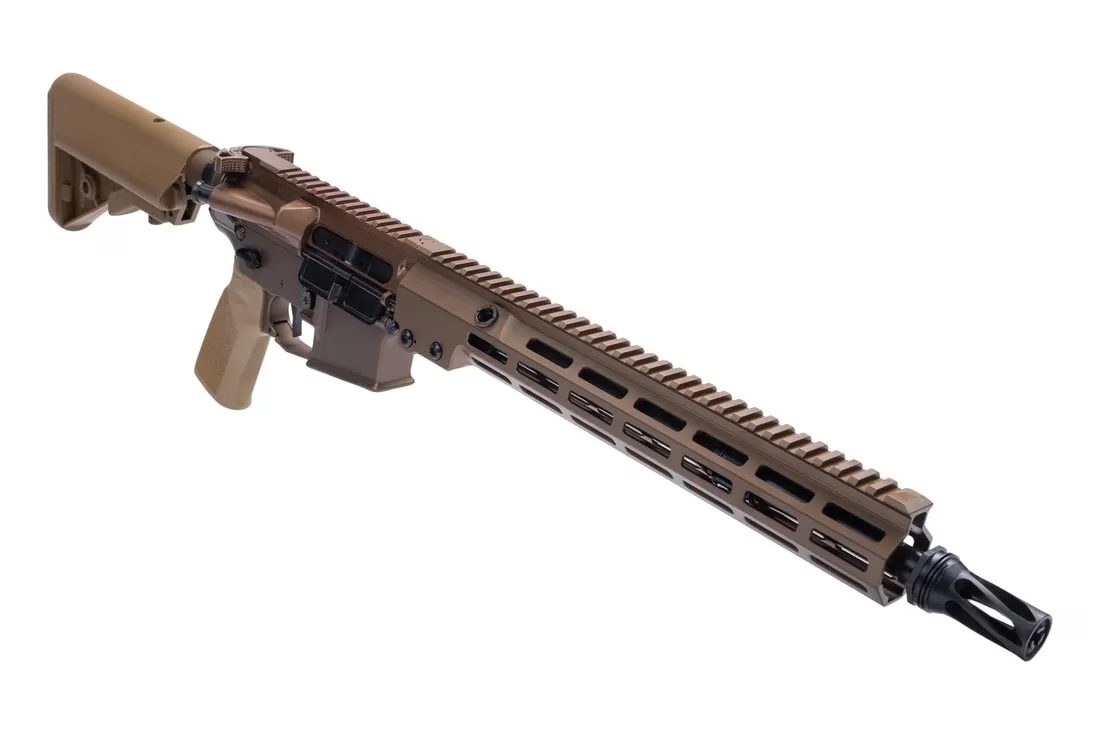
Super Duty MOD1 14.5-inch
Next up is the Geissele Super Duty MOD1 5.56 NATO AR-15 Rifle – 14.5”. A slightly more compact rifle, they’re equipped with a shorter 14.5-inch barrel, making them better suited for defensive, competitive, and recreational applications. Despite having a barrel length shorter than 16 inches, they aren’t considered an SBR, as the included HUXWRX muzzle device is pinned and welded to the barrel. While this means you won’t have to file any additional forms with the ATF, it does mean that you won’t be able to swap out the muzzle device without sending it to a gunsmith. Still, since the HUXWRX muzzle device it comes with makes use of their Torque Lock attachment system, you can still use HUXWRX suppressors with no issues.
Capability-wise, the 14.5 Super Duty AR-15 is borderline on par with the 16-inch variant. It does have slightly diminished ranged performance due to its shorter barrel, but with the right ammunition and optic, it can still be incredibly accurate at distance. It’s slightly more maneuverable than the 16-inch rifle due to its shorter overall length, and it weighs marginally less too. Overall, it’s a solid pick if you’re in the market for a general-purpose or duty rifle.
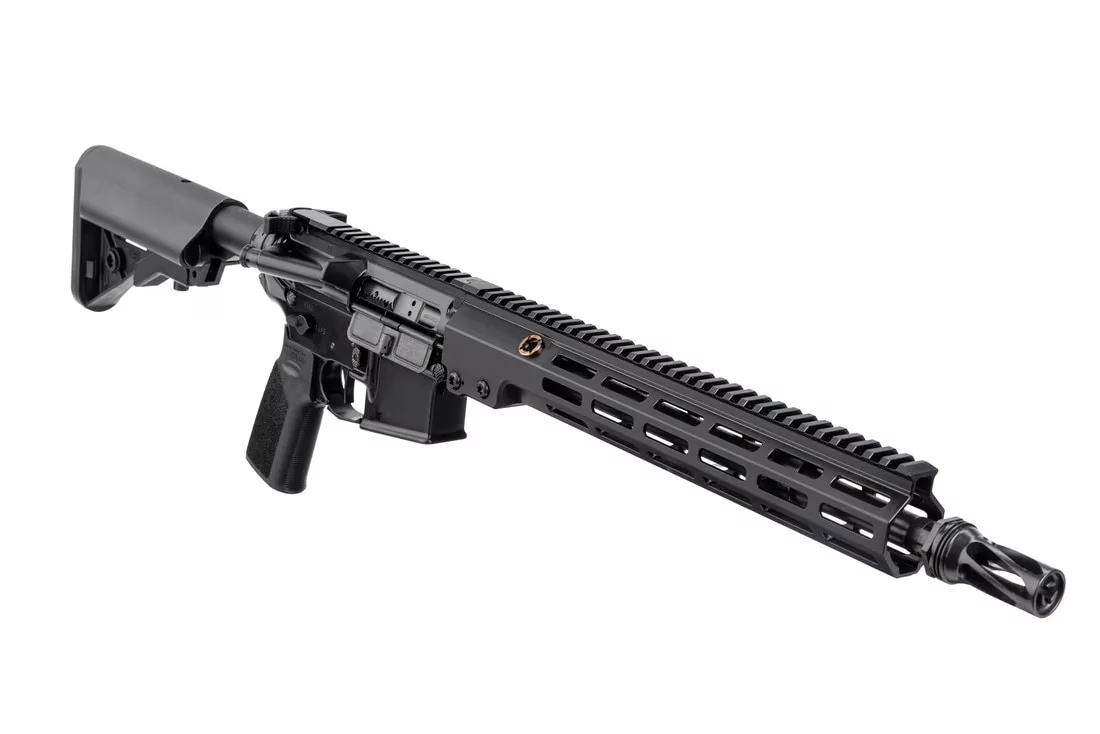
Super Duty MOD1 13.9-inch
The shortest rifle in the Super Duty line, the Geissele Super Duty MOD1 5.56 NATO AR-15 Rifle – 13.9″ is the final rifle option to consider. Compared to the other rifles mentioned thus far, the 13.9-inch variant offers performance that’s nearly identical to the 14.5-inch variant. Although it produces marginally less muzzle velocity, the difference is practically negligible.
Something to point out is that many enthusiasts often erroneously believe that 13.9-inch rifles are, by default, shorter than 14.5-inch ones. While yes, the barrel is shorter; it’s still pinned and welded to 16 inches to keep it a legal rifle and not an SBR; so, the overall length of the two is basically the same. With that in mind, you might be wondering why to consider a 13.9 rifle over a 14.5. Although they perform nearly identically, the 13.9 rifle is marginally more maneuverable since it weighs slightly less. But ultimately, choosing it over the other options is more a matter of user preference than anything.
Building the Perfect Setup
No matter which Super Duty rifle you choose, it isn’t going to be effective unless you’ve set it up to best fit your preferences. We’ve mentioned it a few times by now, but these rifles do not come with any type of optics, and optics are easily the most important upgrade you can make to your rifle, and without them, your rifle is basically unusable. That said, the term ‘optics’ covers a lot of different models, ranging from red dot sights to variable power scopes and everything in between.
While the breadth of choices is certainly overwhelming, it’s important to remember that Super Duty rifles, by design, are best suited for general purpose use. As such, there’s a few optics that immediately stand out for such applications, but the most prominent are reflex sights, LPVOs, and prism scopes.

Reflex Sights
Reflex sights are a solid choice for a variety of applications. Low-profile, durable, and intuitive to use, they offer the most in terms of agility, with them boasting an incredibly wide field of view, and extremely fast target acquisition speeds. That said, they lack the ranged capabilities of LPVOs and select prism scopes, but in return, you get the most agile setup possible, allowing you to quickly and efficiently engage multiple targets.
It’s worth noting that the term “reflex sight” extends to quite a few different optics. Red dot sights, holographic sights, and open-emitter dot sights are all reflex sights but are constructed differently and have different advantages. We go more in-depth on this in our guide, “Reflex Sight vs. Red Dot”, we recommend checking it out to get a better idea of how they perform.
As far as your options go, there are several. Brands like Primary Arms Optics, Aimpoint, EOTech, Holosun, and Vortex Optics, are just a few of the many that offer top-tier reflex sights. And, regardless of which one you opt for, it’s important to note that you can also add a red dot magnifier to your setup too. Magnifiers mount behind your red dot, and they magnify both your reticle and sight picture. This allows you to get some extra ranged utility out of your rifle, as you can freely switch to a magnified sight picture whenever necessary.
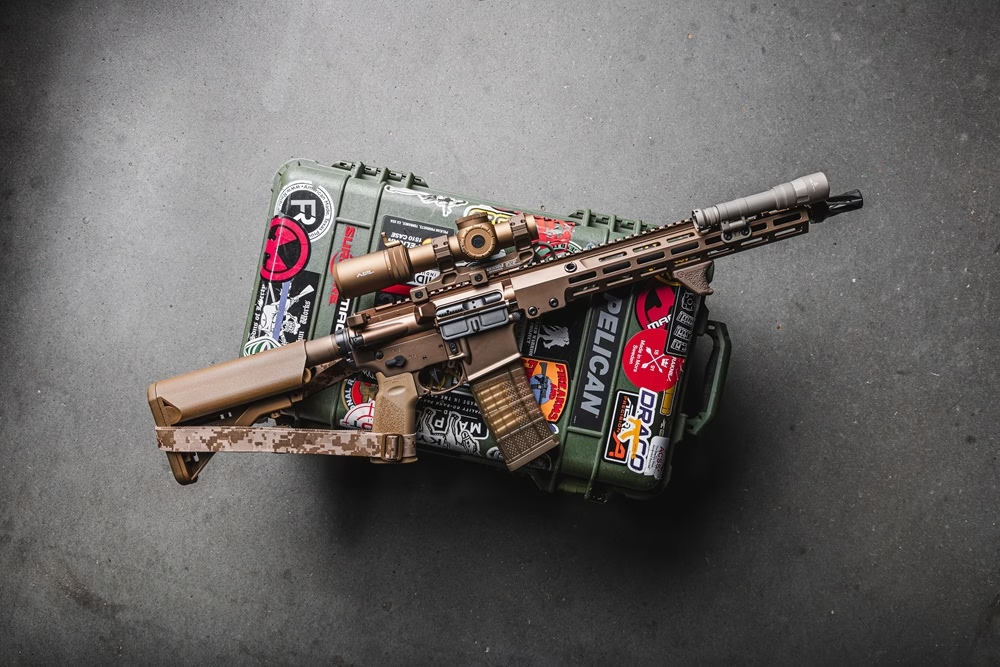
LPVOs
LPVOs, otherwise known as Low-Power Variable Optics, are a specialized type of rifle scope designed to maximize the utility of a rifle across multiple engagement distances. A variable power optic typically comes with either a 1-6x, 1-8x, or at times, a 1-10x magnification range, allowing them to excel in both close- and long-range engagements. At 1x magnification, they perform similarly to red dot sights—although they aren’t as agile since they have a more restrictive eye box; they still have a wide FOV, making them rather effective at close range.
As such, most popular LPVO options have incredibly specialized reticle systems that are designed to cater to both close- and long-range engagements. For instance, Primary Arms Rifle Scopes make use of the Advanced Combined Sighting System, better known as ACSS®, reticle family. ACSS Reticles are highly specialized, offering intuitive aiming solutions that blend different elements such as BDC ranging elements, and either MOA- or MIL-based measurements to maximize adaptability across all scenarios and ranges.
For instance, optics such as the PAO PLxC® 1-8×24 FFP RDB Rifle Scope with the ACSS Raptor Reticle has an outer horseshoe for fast target acquisition, and at 1x magnification, it functions a lot like a red dot reticle. In the same vein, the SLx® 1-6×24 SFP Rifle Scope Gen IV houses the popular ACSS NOVA® reticle, a fiber wire reticle that has a truly Red Dot Bright® center dot. Plus, when magnified, both scopes can easily range out to around 600 to 800 yards, depending on the reticle system—making them a solid pairing for any of the Super Duty AR-15s mentioned above.
One last thing you may have noticed is that different PAO rifle scopes have different monikers attached to them (PLxC and SLx). These are different tiers that are offered by PAO, and if you’re considering one of their optics, we recommend checking out our guide, “Primary Arms Optic Tier System Explained”, to get a better idea of how optics in each tier perform.
Prism Scopes
Prism scopes are another great option to consider, and this list wouldn’t be complete without them. Prism scopes effectively bridge the gap between smaller reflex sights and larger variable power optics. They have a more compact footprint that’s akin to red dot sights, but they’re constructed similarly to variable power scopes. As such, they come with etched reticles, giving them incredible clarity, but rather than having variable power, they have fixed magnification.
Throughout history, prism scopes have been used to great effect, with models like the Trijicon ACOG being some of the most notable. Still, they have their limitations, most of which stem from their fixed magnification. Since you’re locked into one magnification level when you opt for one, you will either lose out on close- or long-range adaptability, depending on the magnification level you choose. That said, there are ways to mitigate this.
Many popular prism scopes either come standard with integrated reflex sight mounts or are compatible with 12 O’clock mounts that allow you to run an offset red dot. This allows you to easily switch from magnified to non-magnified with a simple head adjustment. Lastly, select 1x prism scopes, like the PAO SLx and GLx® 1x MicroPrism Scopes, are compatible with red dot magnifiers, meaning you can have the benefits of having an ultra-crisp etched reticle, while still having the ability to magnify it whenever needed.
Conclusion
For those in search of a high-quality general-purpose rifle that can be adapted to fit a myriad of different applications, there’s few that do it like the Geissele Super Duty MOD1 AR-15. Backed by Geissele’s commitment to excellence, these rifles come packed with a plethora of top-tier features, making them practically ready for use out of the box.
However, while capable, it’s important to recognize that not every Super Duty AR-15 is created equal. Their varying barrel lengths make it so that different models cater to different individual needs and preferences. And, although they all offer solid functionality right out the gate, it’s important to recognize that the way in which you configure your rifle is going to determine much of its overall capabilities.
As such, your choice of optics and accessories are some of the most crucial upgrades you can make to your rifle. Fortunately, you have a plethora to choose from, and regardless of whether you plan to use your rifle for defense, competition, or duty use, the Super Duty MOD1 is without a doubt one of the best rifles you can pick for the job.
